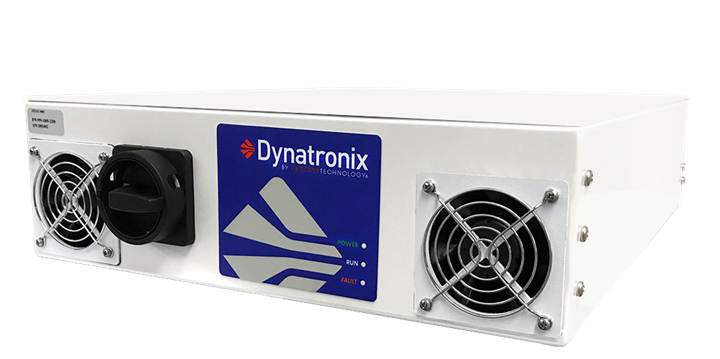Process Technology Launches DTX Series Power Supplies
The company’s DTX series offers accurate, ultra-low ripple DC power and reduces downtime, waste and energy consumption.
#energy

Process Technology’s DTX power supplies are designed to deliver accurate, ultra-low ripple DC power.
Photo Credit: All images courtesy of Process Technology
Process Technology (Willoughby, Ohio) has designed and manufactured innovative thermal and power supply products for more than 40 years. The company continues to produce state-of-the-art technologies for the surface finishing industry and recently launched its DTX new generation, high-performance power supply series.

The new power supply models are paired with the company’s new M1 Controller.
Both models in the series, the DTX-6000 and the DTX-12000, are designed to deliver accurate, ultra-low ripple DC power. High-efficiency silicon carbide (SiC) components and synchronous rectification (SR) reduce process energy consumption, while the modular 19-inch external footprint allows for scalable power levels. In addition, the new power supply models are paired with the company’s new M1 Controller featuring digital controls, a bright LCD screen, advanced data logging, and ODVA-certified Ethernet/IP connectivity capability.
According to Ralf Daube, product manager, power supply products, the DTX series is aimed at saving energy. The systems use Field Programmable Gate Array (FPGA) technology to reduce downtime and reduce waste and energy consumption. The DTX power supplies boast up to 96% efficiency, while the efficiency of traditional power supplies is around 90% or lower. Improved efficiency also contributes to less buildup of heat inside the unit, which translates to improved lifetime of the system.
Another significant advantage of the DTX series is power output accuracy, which is important for ensuring repeatability of process quality in plating operations. “We have a lot of filter stages inside the system to ensure ripple-free output,” Daube explains. “The combination of low ripple and high accuracy ensures the best performance for the customer. The ultimate aim is to ensure that our customer gets the output current or voltage that they want.”
In addition, the DTX series offers remote controls that include tools for process automation such as a counter timer and recipe features. Despite these additional features, the plug-and-play system allows for easy integration. “Nobody wants to spend a lot of time and money setting up a system and getting it communicating with their PLC,” Daube says.
According to Doreen Langa, senior product manager, the new DTX series is representative of the ways in which Process Technology continues to innovate and implement the latest technologies in its surface finishing solutions. Even as this latest series launches, the company continues to look forward and is currently working on bringing all the benefits of the DTX series to a water-cooled version launching this year, while putting the safety of its products at the forefront, complying with UL and CSA standards. Langa says this focus on continual improvement and safety is what defines Process Technology as a leader in surface finishing technology. “I’m very proud of what we’ve accomplished with these power supplies,” she says. “The safety features, the low ripple, the accuracy, and these are truly game-changers.
Process Technology | 800-621-1998 | processtechnology.com
RELATED CONTENT
-
Aqueous Cleaning Basics
Four factors affect the cleaning process: chemistry; temperature; energy; and time. The various combinations determine how clean your part will be. This article reviews the basics of each type of cleaning to help you determine what will work best for you...
-
Pretreatments: The Next Generation
Emerging technologies can save energy, ease environmental concerns
-
Using Alternatives in Pretreatment Baths for Degreasing
Effective cleaning at low, even ambient temperatures, is possible, says Atotech’s Brandon Lloyd, and creates a safer work environment and reduces energy demands.
















